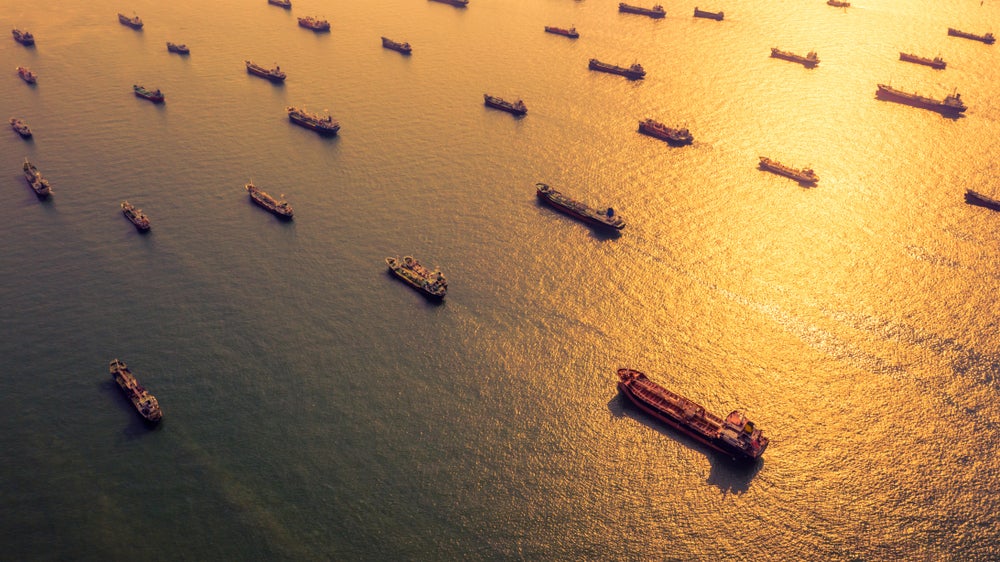Today, 3.3 billion tonnes of oil cargo is safely and efficiently carried at sea annually. While the crude oil cargo itself may not have changed, the industry carrying it across the sea is unrecognisable. Global market developments have driven vessels to evolve significantly, including how they are managed and the shipping data they now create.
When the first sailors took to the sea, their data references came in the forms of constellations, planets, and the crew’s experience-based knowledge of how to reach their destination. They would also consider variables such as the colour of the sky for natural insights into the weather, and then change course accordingly.

Today, navigational decisions and data are not found in the stars. Rather, this data is created by the trading fleet with one vessel alone generating thousands of data points. In fact, the entire shipping industry produces nearly 20GB of data daily. Yet, challenges remain regarding harnessing this vast swathe of data into meaningful decision-making. So, how can we take advantage of the wealth of data that is at our fingertips?
Data informs decision-making
It is no exaggeration that making sense of data is the foundation of all good commercial decisions in the very large crude carriers (VLCC) segment today. For example, if you know the rate at which a VLCC was fixed at some point this week, you have some topical insight into market movements. If you know the exact rate a VLCC was fixed at on the same route that you are negotiating for 5 minutes ago, you have a superior level of insight.
Historically, this data was only available to a select few in the market. Now, this data is freely accessible through mobile apps. With each spot fixture generating close to 100 commercial data points, that is a lot of data that you can transform into actionable insights.
A wide range of accurate, timely data offers a significant commercial advantage. If you cross-check vessel and contract specifications against your own, you can understand the exact market value of one ship on one route when you are making a deal. By accessing a comprehensive breakdown of that vessel’s Time Charter Equivalent (TCE), you can understand how earnings translate to profits across the market – and where you may need to adjust.

US Tariffs are shifting - will you react or anticipate?
Don’t let policy changes catch you off guard. Stay proactive with real-time data and expert analysis.
By GlobalDataYou can go one step further by coupling vessel data with detailed cargo forecasts, which can further allow decision-makers to plan effectively, whether making strategic decisions on asset plays or dry docking dates to commercial decisions by charterers and cargo owners guided by VLCC availability and freight levels globally or in specific regions.
We are now harnessing this data to enable ship owners to better revenues than they could do by themselves. When you combine a fiercely competitive shipping landscape with historically siloed data, data is a commodity that many desire, but few have been able to access effectively.
Working with the experts and pooling data
How to capitalise on data and digitalisation is the theme of many industry conferences. Arguably, the best place to start with data is by focusing on the people who collate, analyse and will ultimately use it.
For example, if we look at the role that artificial intelligence will play and has already started to play in our world, this will undoubtedly bring value to our industry by generating efficiencies and highlighting patterns that can be used to optimise the many facets of shipping and the wider supply chain. However, AI is ultimately only as valuable as the data that feeds it, and that data is nothing without the human intelligence of experts who not only train and improve the data but understand how to translate it into the next lucrative windfall.
Yet, before we look too far ahead, shipping already faces numerous barriers and obstacles when trying to harness data. One such obstacle is trying to filter your data points from the vast and ever-growing number of data sources to find the right type of data and make the best decisions. Complex environmental regulations demanding emissions performance data present a more recent challenge, as do companies requiring the ability to standardise and share data throughout the supply chain in the wake of greater demand for transparency. Data is business critical today, as all these forces increase their influence on how the industry operates.
However, are there instances where data is still hard to come by or you require more resources to interpret and leverage it? The answer for tanker owners is simple: Pools. We can leverage collective knowledge and scale to create enhanced insights.
Data is now in our industry’s DNA. It is time to take advantage of the data that we have available now, which will require talent and collaboration in what is currently a very dynamic market. All sectors of the shipping industry need quality data, faster, to support their decision-making to enable a safe, efficient, and ultimately more profitable industry.




